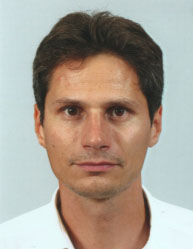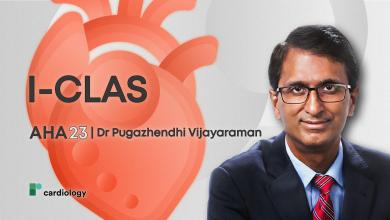Search results
Author(s):
Simon Ermakov
,
Melvin Scheinman
Added:
3 years ago
Arrhythmogenic right ventricular cardiomyopathy (ARVC) is an inherited cardiomyopathy characterised by progressive replacement of the ventricular myocardium by fibrofatty tissue.1 Patients with the disease are predisposed to ventricular arrhythmias, heart failure and sudden cardiac death.
Pathophysiology
ARVC has a strong genetic basis with most disease variants displaying an autosomal dominant…
View more
Frédéric Sacher
Research Area(s) / Expertise:
Job title: Professor
Author
Author(s):
Pugazhendhi Vijayaraman
Added:
5 months ago
AHA 2023 — In this short interview, we are joined by Dr Pugazhendhi Vijayaraman (Geisinger Heart Institute, US) to discuss the findings of the I-CLAS study, an international collaborative investigation into left bundle branch area pacing.This retrospective observational study compared the arrhythmic risk in biventricular pacing as compared to left bundle branch area pacing. 1778 Patients were…
View more
Author(s):
Steven Back
,
Peter R Kowey
Added:
3 years ago
Ventricular arrhythmias are a therapeutic challenge. They occur frequently in clinical practice, are found in patients with and without structural heart disease, and most importantly, are unpredictable and potentially deadly. Patients with a history of sustained ventricular tachycardia (VT) and VF or those at high risk for such arrhythmias, may require an ICD to prevent sudden cardiac arrest…
View more
Author(s):
David J Callans
,
Matthew Reynolds
,
Peter J Zimetbaum
Added:
3 years ago
There was a joke years ago that no one understood electrophysiologists, or even wanted to, and that suited us just fine. We were happy to be isolated in our labs working on largely academic problems. Fast forward to now, and the monumental advances in our ability to map and ablate arrhythmias and in new strategies for implantable device therapy have thrust us into the realm of high-volume…
View more
Author(s):
Megan Barber
,
Jason Chinitz
,
Roy John
Added:
3 years ago
Ventricular arrhythmias are designated idiopathic when demonstrable structural heart disease, significant coronary disease including coronary spasm or genetic arrhythmia syndromes are absent.1 These arrhythmias may be benign but are also a recognised cause of sudden cardiac death. The common form of idiopathic ventricular tachycardia (VT) originates in the ventricular outflow tracts, manifest…
View more
Author(s):
Roberto Keegan
,
Cynthia Yeung
,
Adrian Baranchuk
Added:
3 years ago
Chagas disease is an important public health problem in Latin America. Almost 25% of the population (approximately 65 million individuals) are at risk of infection and another 6 million people are affected.1 However, migration and globalisation have resulted in the increased presence of Chagas disease worldwide, particularly in the US and Europe.
Chagas disease is caused by a parasite, the…
View more
Petr Peichl
Research Area(s) / Expertise:
Job title: Cardiology Fellow at the Department of Cardiology
Author
Author(s):
Charlotte Brouwer
,
Mark G Hazekamp
,
Katja Zeppenfeld
Added:
3 years ago
The reported incidence of congenital heart disease (CHD) depends on the number of trivial lesions included, such as atrial and ventricular septal defects (ASDs and VSDs). Moderate-to-severe CHD numbers remain stable with 6 per 1,000 live births.1 Survival into adulthood has improved dramatically over the last 25 years and has been driven mainly by a decreased mortality in moderate and severe…
View more
Functional Substrate Mapping Of VT
Author(s):
Andreu Porta-Sánchez
,
Neil T Srinivasan
,
John Silberbauer
,
et al
Start date:
Oct 21, 2021
Broadcast
















 « First
« First